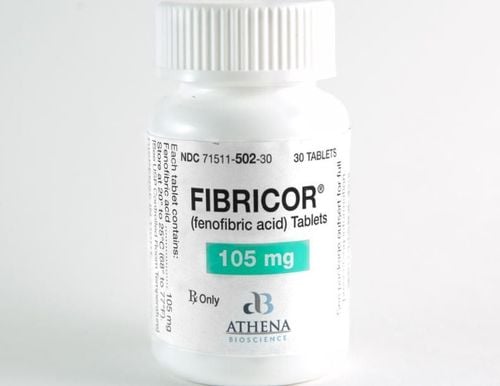This is an automatically translated article.
Post by Master, Doctor Mai Vien Phuong - Gastrointestinal Endoscopy - Department of Medical Examination & Internal Medicine - Vinmec Central Park International General Hospital.
Helicobacter pylori is a bacteria that infects the stomach environment and is associated with gastrointestinal diseases. However, helicobacter pylori infection and its manifestations affect not only the gastric system but also cardiovascular, respiratory, and metabolic pathologies.
1. Helicobacter pylori infection and cardiovascular disease
Atherosclerosis is an ischemic disease caused by a chronic inflammatory process in the arterial walls and can lead to other circulatory system diseases. Yang et al showed, in animal models, a positive association between helicobacter pylori infection and atherosclerosis. They also observed that CagA was able to stimulate foam production within macrophages, which contributed to increased atherosclerotic plaque magnification and arterial dysfunction. In addition, exsomes derived from helicobacter pylori-infected gastric epithelial cells (Hp-GES-EVs) were absorbed by plaques and CagA was released within them. This exacerbates the inflammatory process and leads to lesions in vivo.
A study in Korea evaluating the relationship between H. pylori and cardiovascular risk factors concluded that infection with this bacterium has the potential to cause atherosclerosis. A study performed in the Chinese population also identified a high prevalence of arterial hypertension in H. pylori seropositive patients (OR = 1.23; 95% CI: 1.04-1, forty six). One of the possible mechanisms to explain the association is the production of inflammatory cytokines such as TNF-α, interleukin-6 and c-reactive protein induced by H. pylori. These cytokines lead to insulin resistance, which contributes to total peripheral vascular resistance and the process of atherosclerosis. Both phenomena are associated with hypertension.
Coronary artery disease (CAD) is characterized by decreased blood flow to the heart due to coronary artery obstruction due to atherosclerosis and thrombosis. A meta-analysis showed that H. pylori infection was significantly associated with a higher incidence of CAD (OR = 1.11, 95% CI: 1.01-1.22, P = 0.24).
2. H. pylori infection and respiratory diseases
Research on infections, microorganisms and allergic diseases begins with a discussion of the hygiene hypothesis due to the increase in allergic diseases, such as allergic rhinitis or asthma and eczema in the world after the industrial revolution. The first study to determine the seroprevalence of H. pylori in asthmatic patients was performed in 2000 and had inconclusive results. Therefore, several studies have been conducted to elucidate the association between both conditions and although some of the findings are controversial, meta-analyses indicate that Helicobacter pylori infection can be is considered a protective factor for asthma, especially in children and cagA-positive patients. In children, H. pylori infection induces a Treg pattern that primarily suppresses Th2-mediated allergic reactions. Furthermore, the H. pylori IgG titer in children is negatively correlated with asthma severity. This response is activated against very strong bacterial antigens and can suppress reactions to autoantigens and allergens. Another mechanism that may explain the lower incidence of asthma in H. pylori carriers is the presence of bacteria, particularly CagA+ strains, that protect against gastroesophageal reflux disease. (GERD), reducing GERD-related asthma and exacerbations associated with the condition.

3. H. pylori infection and diabetic metabolic disease
A positive association between H. pylori infection and diabetes mellitus (DM) was found in a meta-analysis of 39 studies, including more than 20 thousand patients (OR = 2.00, 95% CI. : 1.82-2.20, P = 0.07). In addition, H. pylori infection not only increases the risk of diabetes, but also reduces the ability to control blood sugar levels in diabetic patients. A meta-analysis in which 35 studies observed that glycated hemoglobin A levels were significantly higher in H. pylori-positive patients when compared with H. pylori-negative individuals (weighted mean difference) average 0.50, 95% CI: 0.28-0.72, P < 0.001). However, the fact that these studies did not account for other factors affecting glycemic control, such as obesity index and smoking status, is an important limitation. Among the hypotheses about how H. pylori increases the risk of diabetes, it is believed that increased cytokine production leads to phosphorylation of serine residues from the insulin receptor substrate, which binding to the insulin receptor is deficient.
Please dial HOTLINE for more information or register for an appointment HERE. Download MyVinmec app to make appointments faster and to manage your bookings easily.
References: Santos MLC, de Brito BB, da Silva FAF, Sampaio MM, Marques HS, Oliveira e Silva N, de Magalhães Queiroz DM, de Melo FF. Helicobacter pylori infection: Beyond gastric manifestations. World J Gastroenterol 2020; 26(28): 4076-4093 [PMID: 32821071 DOI: 10.3748/wjg.v26.i28.4076]














